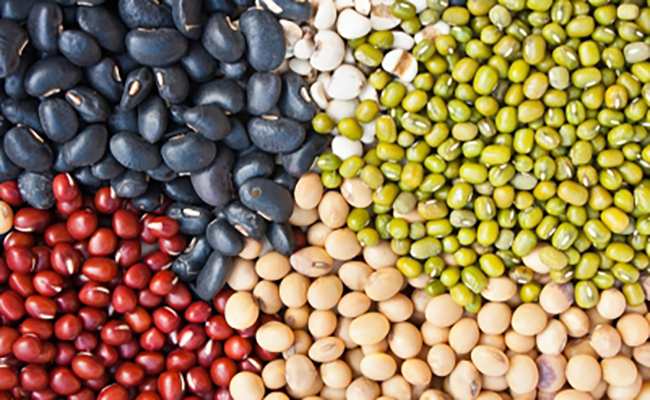How to Stock a Heart Healthy Kitchen
 If you keep heart healthy foods on hand and easily accessible you will be much more likely to see success in your efforts to lower cholesterol and blood pressure. If you keep unhealthy foods within reach you will make it much harder to achieve your heart health goals. Don’t rely on will power! Stock you kitchen for success. Here are some essentials to keep on hand:
If you keep heart healthy foods on hand and easily accessible you will be much more likely to see success in your efforts to lower cholesterol and blood pressure. If you keep unhealthy foods within reach you will make it much harder to achieve your heart health goals. Don’t rely on will power! Stock you kitchen for success. Here are some essentials to keep on hand:
Whole grains, such as barley, oats, rice, buckwheat, and quinoa, are rich in fiber, antioxidants, vitamins, and minerals. These nutrient dense grains promote a healthy heart.
Olive oil
Continue reading
Heart Health: Are you selecting whole grains?
 By selecting whole grains you consume more nutrient dense foods that provide higher fiber content . . . all of which equals a heart healthy choice. Whole grain products contain all layers of the whole grain – the bran, the germ, and the endosperm. When it comes to selecting whole grains, you have many more options than just being sure to grab 100% whole wheat bread when grocery shopping. There are many whole grain varieties available to you.
By selecting whole grains you consume more nutrient dense foods that provide higher fiber content . . . all of which equals a heart healthy choice. Whole grain products contain all layers of the whole grain – the bran, the germ, and the endosperm. When it comes to selecting whole grains, you have many more options than just being sure to grab 100% whole wheat bread when grocery shopping. There are many whole grain varieties available to you.
Oats
Oats almost never having the bran or germ removed during processing. This means when you read a food label and see oats or oat flour listed as an ingredient, it’s safe to know this is a whole grain ingredient. Oatmeal has been linked to lower cholesterol levels.
Continue reading
Is your granola bar a candy bar in disguise?
 There are all kinds of nutrition bars available, from energy bars, to protein bars, to weight control, to gluten free, to breakfast bars, and the list goes on. Unfortunately, many of these supposed “nutrition” bars are really just glorified candy bars.
There are all kinds of nutrition bars available, from energy bars, to protein bars, to weight control, to gluten free, to breakfast bars, and the list goes on. Unfortunately, many of these supposed “nutrition” bars are really just glorified candy bars.
What to look for when selecting a nutrition bar:
Sugar – Look at the nutrition label and see how many grams of sugar there are per serving. . .and does a full bar equal 1 serving? Select a bar with 5 grams or less sugar per bar.
Fiber – Don’t rely on fortified bars to meet daily fiber needs. Isolated fibers, such as inulin, chicory extract, and oligosaccharides do not necessarily provide the same benefit as foods naturally rich in fiber. Select a bar that provides ~3 grams of fiber. Ideally this fiber will come from whole grains, dried fruit, and/or nuts included in the bar.
Vitamins and Minerals – Don’t use a nutrition bar to try and meet 100% of the recommended dietary allowance (RDA) for vitamins and minerals. Look at the food label and see if it’s providing 100% of the RDA. There are potential side effects from consuming too much of certain vitamins and minerals. Select nutrition bars that do not provide 100% of the RDA for vitamins and minerals.
What equals 25 – 35 grams of dietary fiber?

I recently had an individual email me the following question:
How much fiber do I need to eat to equal 25 grams? How many pieces of fruit, slices of bread, cups of barley or flaxseed? I can’t relate to 25 grams.
I want to share the answer with everyone. Read on. . .
How Much Dietary Fiber
You need to consume between 25-35 grams of dietary fiber daily. Of this, soluble fiber should make up 15 grams. For every 1-2 grams of daily soluble fiber intake, LDL (bad) cholesterol is lowered 1%.
The average US dietary fiber intake is 12-18 grams/day. If your current diet is very low in dietary fiber, do not increase to 35 grams overnight. A sudden increase will result in gastrointestinal (stomach) distress and unpleasant side effects (flatulence and diarrhea). You want to increase your intake gradually.
Top 5 Foods Containing Dietary Fiber
Metamucil to Lower LDL Cholesterol
 Metamucil is a rich source of psyllium husk. Psyllium husk is a soluble fiber which works to lower LDL cholesterol levels.
Metamucil is a rich source of psyllium husk. Psyllium husk is a soluble fiber which works to lower LDL cholesterol levels.
Currently the American Heart Association recommends everyone consume 25 to 30 grams of dietary fiber daily. The average American only consumes 15 grams of fiber daily.
How much soluble fiber?
Lower Blood Pressure with Quinoa
Quinoa (pronounced KEEN – wah) has become a hot commodity the past few months according to a National Restaurant Association survey.
What is quinoa?
Quinoa is not technically a grain, but the seed of a large plant called Chenoposium quinoa or Goosefoot plant. Quinoa is available in many colors (ivory, pink, red, white, brown, black) and forms (grains, flakes, cereals, pastas).
Nutrient Analysis



